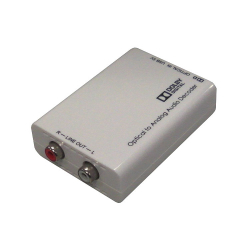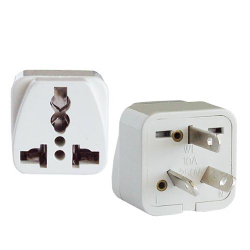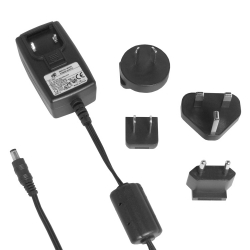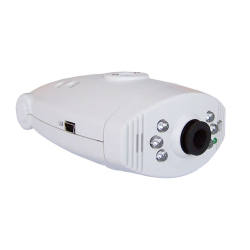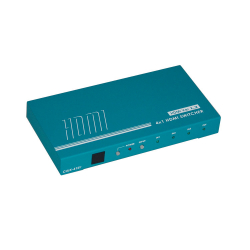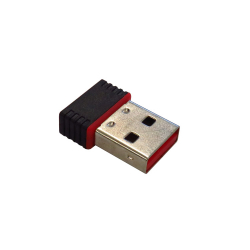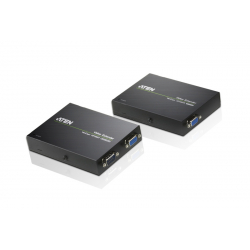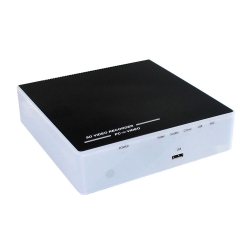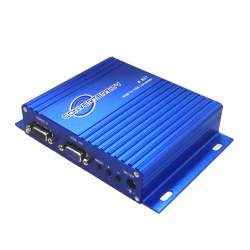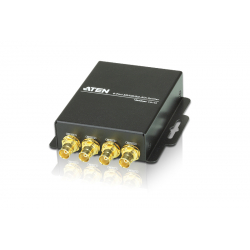A B C D E F G H I J K L M N O P Q R S T U V W X Y Z _
| DAC | Digital to Analog Converter. A device doing the opposite of an ADC (Analog to Digital Converter), converting a digital logic signal to an analog (linear) signal. The ADC and DAC are widely used for conversion between analog and digital video and audio signals. |
| DC | DC (Direct Current) is the unidirectional flow of electric charge. Direct current is produced by such sources as batteries, thermocouples, solar cells, and commutator-type electric machines of the dynamo type. Direct current may flow in a conductor such as a wire, but can also be through semiconductors, insulators, or even through a vacuum as in electron or ion beams. The electric charge flows in a constant direction, distinguishing it from alternating current (AC). |
| DDC | The Display Data Channel or DDC is a collection of digital communication protocols between a computer display and a graphics adapter. Using DDC, a monitor can inform the adapter/video card about its properties, such as maximum resolution and colour depth. The DDC suite of standards was created by the Video Electronics Standards Association (VESA), and aims to provide a "plug and play" experience for computer displays. |
| Deep Colour | A term used to describe a colour gamut comprising a billion or more colours. The HDMI 1.3 specification supports Deep Colour bit depths. It defines bit depths for Deep Colour as 30 bits (1.073 billion colours), 36 bits (68.71 billion colours), and 48 bits (281.5 trillion colours). |
| Differential Gain | Differential gain is the error in the amplitude of the colour signal due to a change in luminance (brightness) level. It is measured by comparing two chrominance signals of initially equal amplitudes riding on two different luminance levels. The inaccuracy is measured as a percentage. Differential gain is important to video signals because if the amplitude of the subcarrier signal changes with a change in luminance level, then the picture being displayed will have colour saturation problems. |
| Differential Phase | Differential phase is the error in the phase of the colour signal due to a change in luminance (brightness) level. It is measured by comparing two chrominance signals of initially equal phases riding on two different luminance levels. The inaccuracy is measured in degrees. The phase of the colour signal is responsible for displaying the proper hue, or base colour. Differential phase is important to video signals because if the phase of the subcarrier signal changes with a change in luminance level, then the picture being displayed will have colour selection problems. |
| Display Port | A digital display interface standard introduced by the Video Electronics Standards Association (VESA). It defines a new royalty-free, digital audio/video interconnect, intended to be used primarily between a computer and its display monitor, or a computer and a home-theater system. Display Port is a competitor to the HDMI connector, the current standard digital connection for high-definition consumer electronics devices. |
| Distribution Amplifier | A distribution amplifier is a device that accepts a single input signal and provides this same signal to multiple isolated outputs. A good quality distribution amplifier amplifies and pre-compensates the incoming signal to avoid signal degradation, before generating multiple identical buffered and amplified outputs. |
| DLP | Digital Light Processing® is a proprietary Texas Instruments technology that uses micro-mirrors on a chip to switch light for video projection, including digital televisions. DLP is used in DLP front projectors (small standalone projection units) and DLP rear projection displays. DLP is the current market-share leader in professional digital movie projection, largely because of its high contrast ratio and available resolution as compared to other digital front-projection technologies. DLP technology has also gained market share in the front projection market, with over 30 manufacturers using the DLP chipset to power their projectors. |

